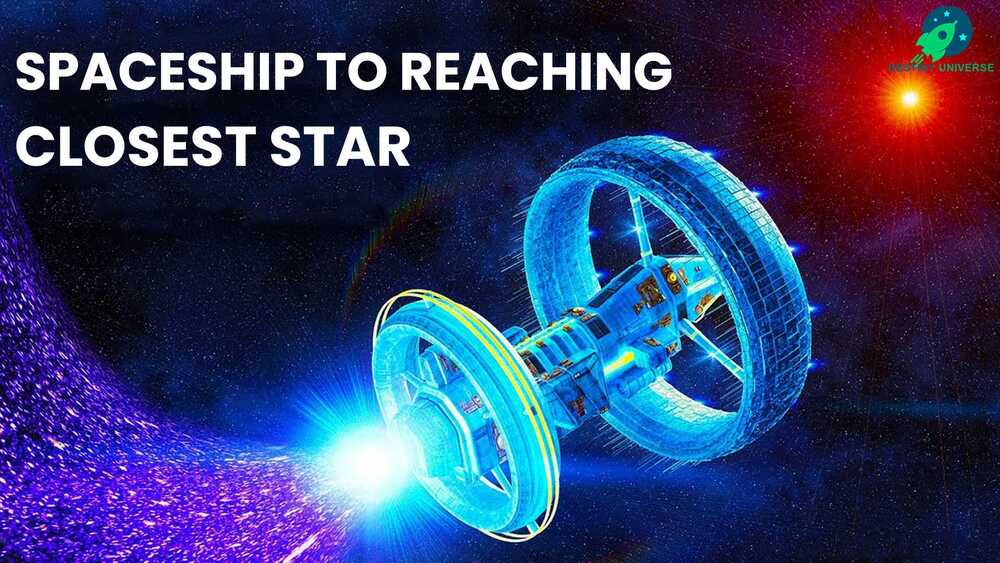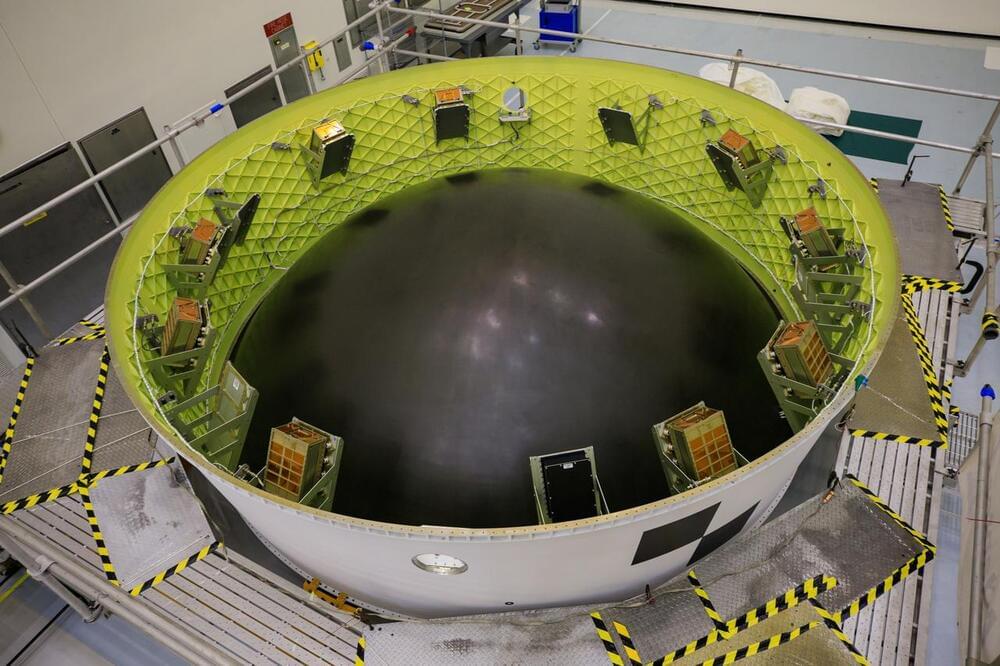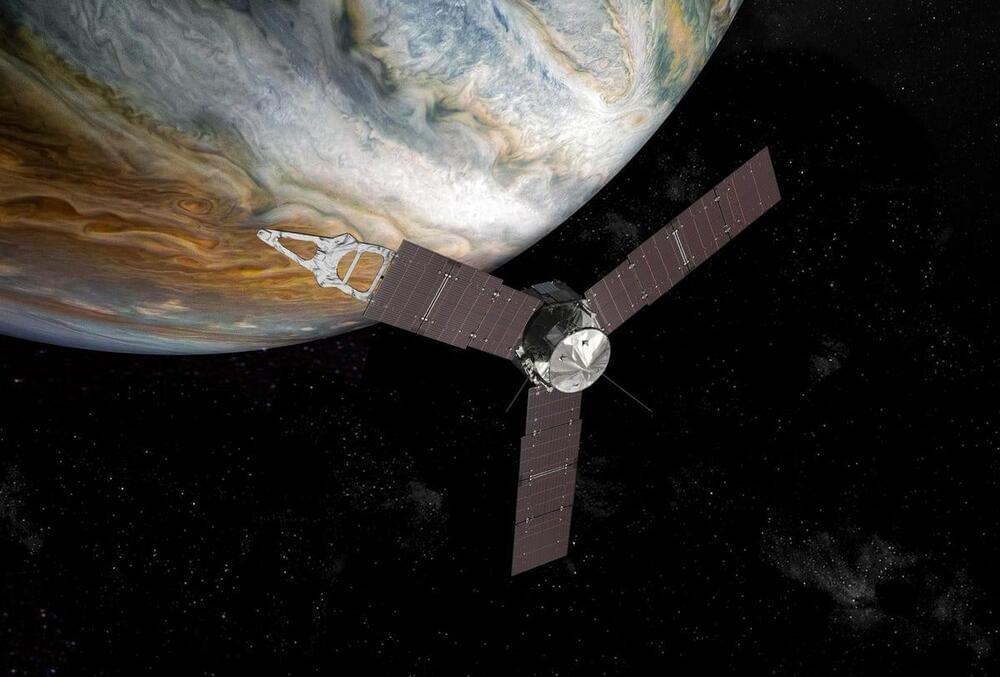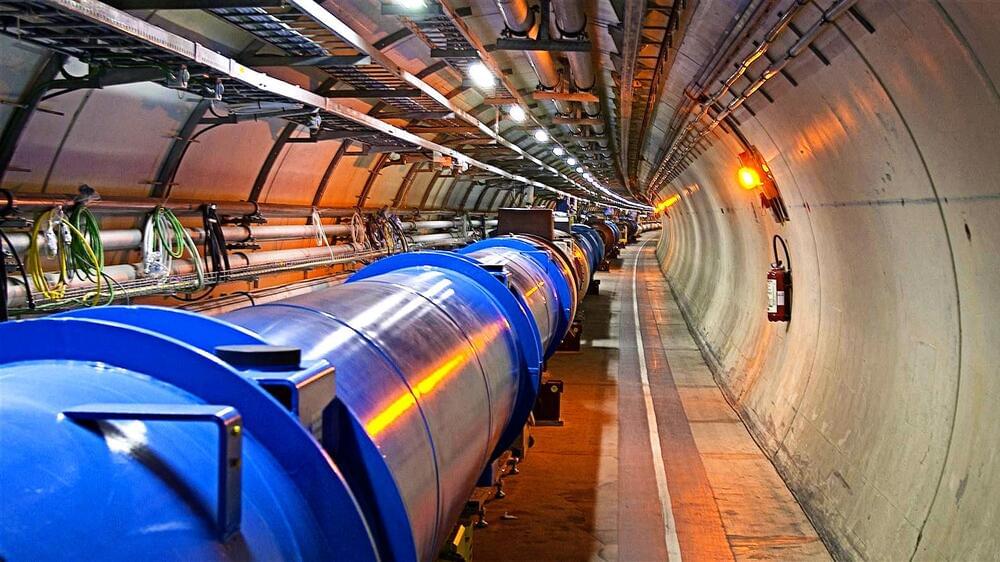Page 5410
Oct 21, 2021
Have you ever wondered how large rockets like the Falcon 9 and Saturn V are transported to their launch sites?
Posted by Alberto Lao in category: space travel
Oct 21, 2021
Why Scientists Think This Object Is An Alien Spacship Not an Asteroid
Posted by Alberto Lao in category: space
Oct 21, 2021
The Most Expeditious Way to Reach The Most Proximate Star
Posted by Alberto Lao in category: futurism
Oct 21, 2021
Adapter structure with 10 CubeSats installed on top of Artemis moon rocket
Posted by Genevieve Klien in categories: habitats, satellites
Workers at NASA’s Kennedy Space Center have lifted the Orion Stage Adapter on top of the Space Launch System moon rocket, adding the structure housing 10 CubeSat rideshare payloads heading into deep space on the Artemis 1 mission. But three of the CubeSat missions missed their opportunity to fly on the first SLS mission.
Teams inside the Vehicle Assembly Building at Kennedy raised the Orion Stage Adapter on top of the Space Launch System rocket Friday evening, according to Madison Tuttle, a NASA spokesperson.
The mounting of the circular adapter structure is one of the final steps in stacking the SLS rocket inside High Bay 3 of the iconic assembly building. The Orion spacecraft, NASA’s human-rated moon ship, will be added to the rocket in the coming days to complete the build-up of the 322-foot-tall (98-meter) launch vehicle for an unpiloted test flight to lunar orbit and back to Earth.
Oct 21, 2021
Lucid Group (LCID) Currently Stands a Hefty Chance of Winning the Contract To Build “the Largest Battery Storage System in the World” [Updated]
Posted by Genevieve Klien in category: internet
Lucid Group (NASDAQ: LCID), a retailer of luxury EVs as well as advanced battery tech, stands to gain quite a lot should it manage to win a lucrative Saudi contract.
As per an interview by the CEO of Saudi Arabia’s Red Sea project as well as the Amaala luxury tourism initiative, John Pagano, the Kingdom is looking to build “the largest battery storage system in the world.” The video embedded in the tweet below is in English.
Project Cielo: AORUS Newest Modular PC With Integrated 5G Connectivity In a Unusual Design.
Japan is using Augmented Reality to teach children about the dangers of flash floods 🌊 https://bit.ly/3kYclTI
Oct 21, 2021
No one knows why some people age worse than others and develop diseases-such as Alzheimer’s, fibrosis, type 2 diabetes or some types of cancer-associated with this aging process
Posted by Kelvin Dafiaghor in categories: biotech/medical, life extension, neuroscience
One explanation for this could be the degree of efficiency of each organism’s response to the damage sustained by its cells during its life, which eventually causes them to age. In relation to this, researchers at the Universitat Oberta de Catalunya (UOC) and the University of Leicester (United Kingdom) have developed a new method to remove old cells from tissues, thus slowing down the aging process.
Oct 21, 2021
In Photos: Jaw-Dropping New Images Of Jupiter And Its ‘Wet Moon’ Europa Taken This Week
Posted by Genevieve Klien in category: space
The first images are now coming through to NASA from this week’s flyby of Jupiter by its Juno spacecraft.
This latest close flyby is the 37th of the mission, but this basketball court-sized spacecraft’s images of the giant planet never cease to amaze.
This week’s images even include a rare photo of Jupiter’s moon Europa.
Oct 21, 2021
Did we discover a new force of nature? New results from CERN
Posted by Genevieve Klien in category: particle physics
Beauty quarks are unstable, living on average just for about 1.5 trillionths of a second before decaying into other particles. The way beauty quarks decay can be strongly influenced by the existence of other fundamental particles or forces. When a beauty quark decays, it transforms into a set of lighter particles, such as electrons, through the influence of the weak force. One of the ways a new force of nature might make itself known to us is by subtly changing how often beauty quarks decay into different types of particles.
The March paper was based on data from the LHCb experiment, one of four giant particle detectors that record the outcome of the ultra-high-energy collisions produced by the LHC. (The “b” in LHCb stands for “beauty”.) It found that beauty quarks were decaying into electrons and their heavier cousins called muons at different rates. This was truly surprising because, according to the standard model, the muon is basically a carbon copy of the electron – identical in every way except for being around 200 times heavier. This means that all the forces should pull on electrons and muons with equal strength – when a beauty quark decays into electrons or muons via the weak force, it ought to do so equally often.
Instead, my colleagues found that the muon decay was only happening about 85% as often as the electron decay. Assuming the result is correct, the only way to explain such an effect would be if some new force of nature that pulls on electrons and muons differently is interfering with how beauty quarks decay.


















